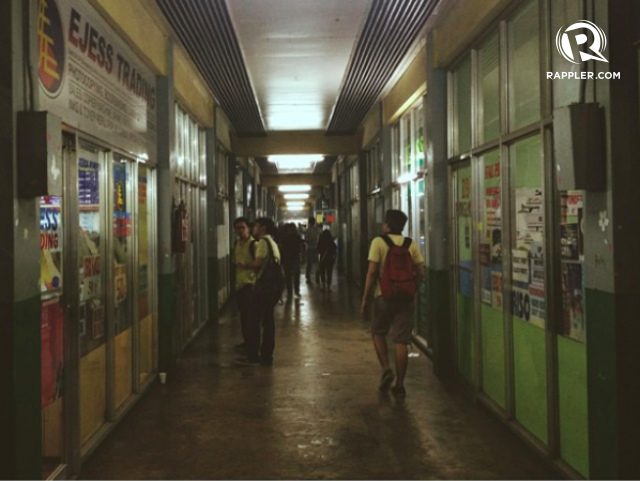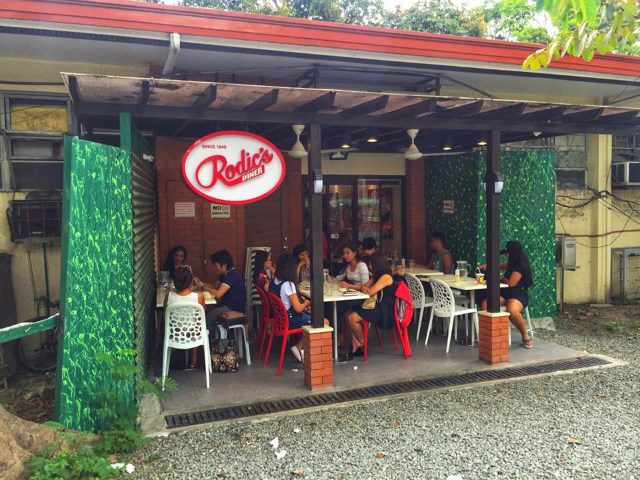SUMMARY
This is AI generated summarization, which may have errors. For context, always refer to the full article.

MANILA, Philippines – Fire hit the University of the Philippines (UP) Shopping Center in Diliman, an iconic fixture on campus that has catered to generations of students and families alike.
UP Vice President for Public Affairs Jose Dalisay Jr said that the building, severely damaged in the fire on Thursday, March 8, is at least 30 years old already.
Despite its name, the UP Shopping Center is not a typical mall. But various businesses called it home – food stalls and small restaurants, beauty parlors, computer shops, money transfer services, optical shops, school supplies stores, and photocopying and bookbinding services, among others.
Beginning and end of life in UP
More than just a building, the UP Shopping Center became a community for the students, with its members playing key roles in their academic lives. (READ: Netizens express grief over razed UP Shopping Center)
In fact, it’s easy to say that one cannot graduate from the university without spending a lot of time in the photocopying and bookbinding stalls that make up at least 1/4 of the UP Shopping Center.
It was in those stalls where professors often left copies of required readings that the students could access. Signs were commonly posted at stall entrances, indicating which readings from specific professors or classes they had.
Usually costing P1 per page, photocopying or printing academic readings in the UP Shopping Center is already quite a steal, especially for students on a tight budget.
In the months leading up to graduation, students also get copies of their thesis printed and bound at the UP Shopping Center.
Stacks of bound theses waiting to be picked up – or students begging to be accommodated despite the long waiting list for binding – are a common sight as the deadline for grades nears.
In fact, Fatima Giganto, an employee of Blessings Copy Center, is now worried over the fate of the students’ academic papers.
“Sayang ‘yung mga thesis ng mga estudyante. Paano na sila? Sana may kopya pa sila (I worry over the students’ theses. What will happen to them? I hope they have copies),” she said.
The UP Shopping Center is also the place where students could buy their Sablay – the graduation sash which many students yearn to wear. (READ: When ‘sablay’ means ‘tagumpay’)

Inclusive community
Located inside the very open Diliman campus, the UP Shopping Center is anything but exclusive.
Despite malls built near the campus, it is still typical to see students from other schools and families residing in nearby communities visiting to avail of more affordable services.
The UP Shopping Center, with its various stalls offering food inside, is also the go-to place of people every Sunday after they attend services in the two churches on campus – the Church of the Risen Lord and the Parish of the Holy Sacrifice.
But perhaps the most famous stall inside is Rodic’s Diner which has been a staple in UP since 1949. The place is known for its tapsilog which, for many UP alumni and even non-UP individuals, is worth the traffic. (READ: The beloved Rodic’s tapsilog)
Aside from the more established restaurants and canteens inside, also located at the entrance and rear end of the center are vendors peddling street food such as fish balls, sweet corn, ripe mango, and lumpiang ubod. These are usually the lifesavers of students short on cash.
Many of the establishments inside the UP Shopping Center employed people who live either in the communities inside or outside the campus. While UP students lost a building that holds memories, the workers lost their livelihood. (READ: P500,000 worth of damage in UP Shopping Center fire – BFP)
String of fires
The incident is the latest in a string of fires that razed iconic UP buildings in the past 3 years.
In June 2015, fire hit the CASAA canteen due to a gas tank leak.
A month later, in July, another blaze razed the UP Alumni Center, also known as Fonacier Hall. The building housed the campus’ bowling alleys used in PE classes.
In April 2016, a fire engulfed the UP Faculty Center, a historic building that was home to offices of at least 250 faculty members. (READ: What does the UP Faculty Center look like after the fire?)
The recent fires have called to question the safety of buildings inside UP Diliman. Students and faculty have called on the administration to review compliance with fire safety rules. – Rappler.com
Add a comment
How does this make you feel?





There are no comments yet. Add your comment to start the conversation.